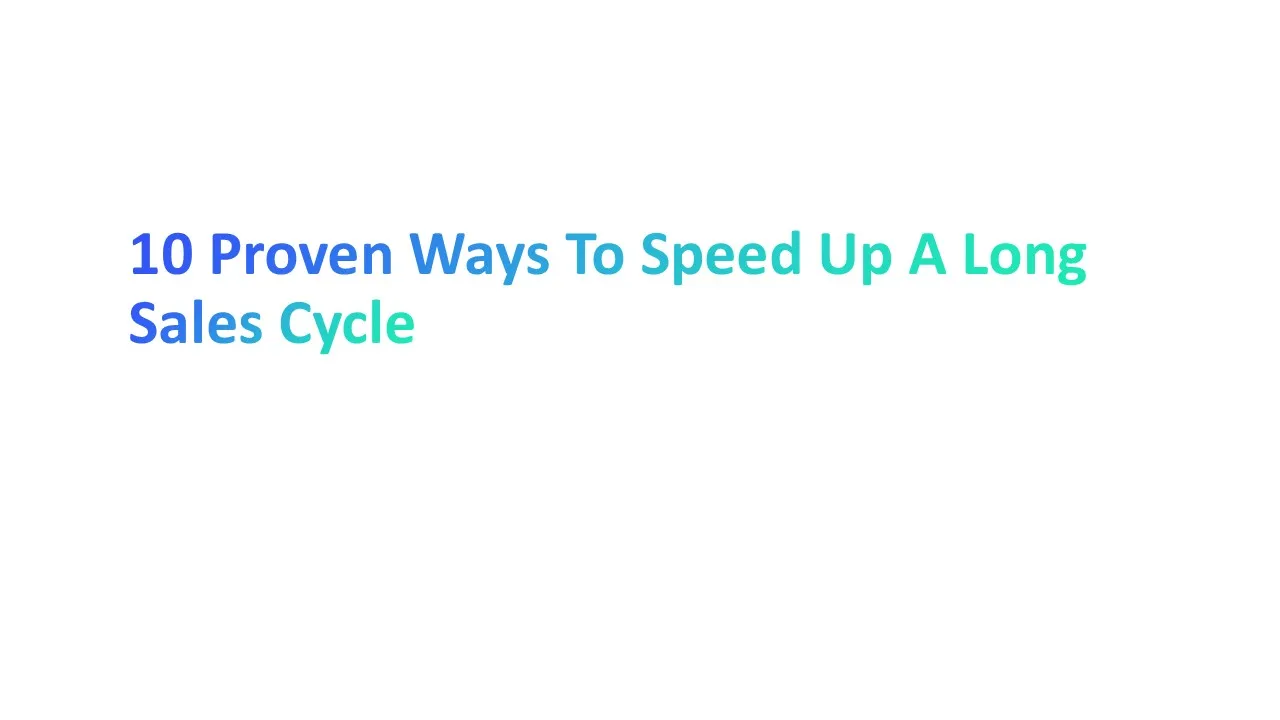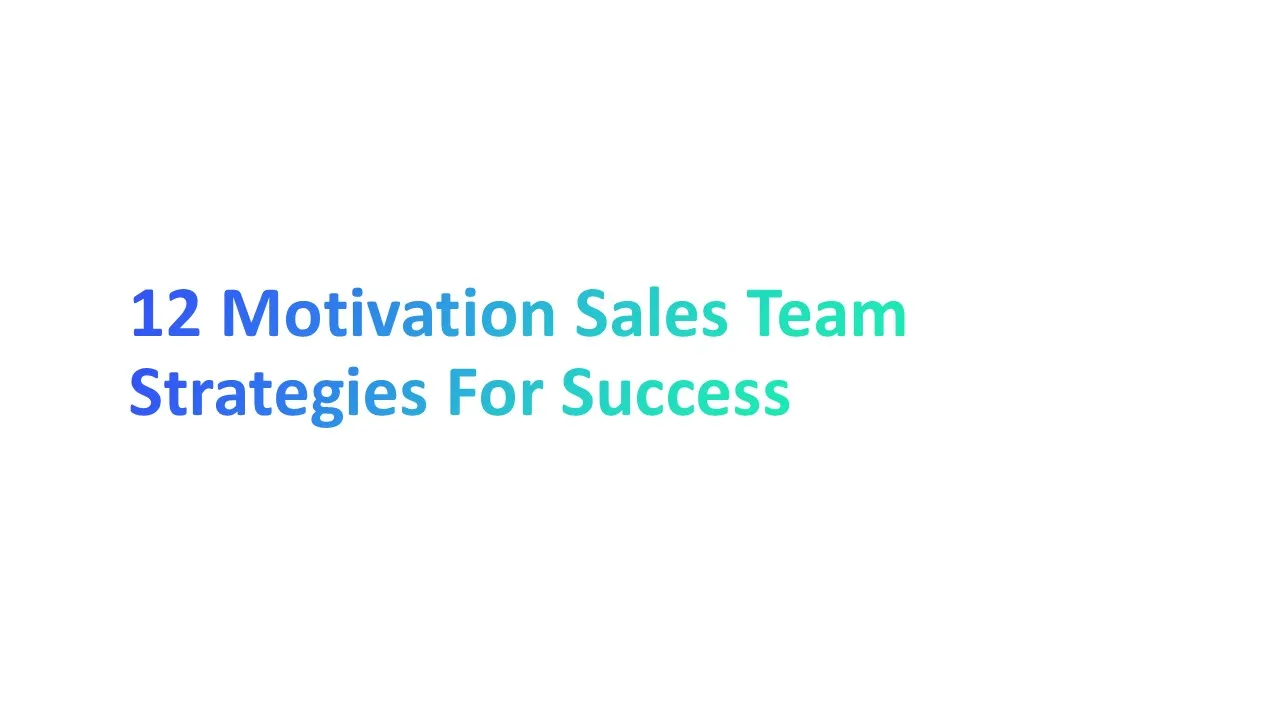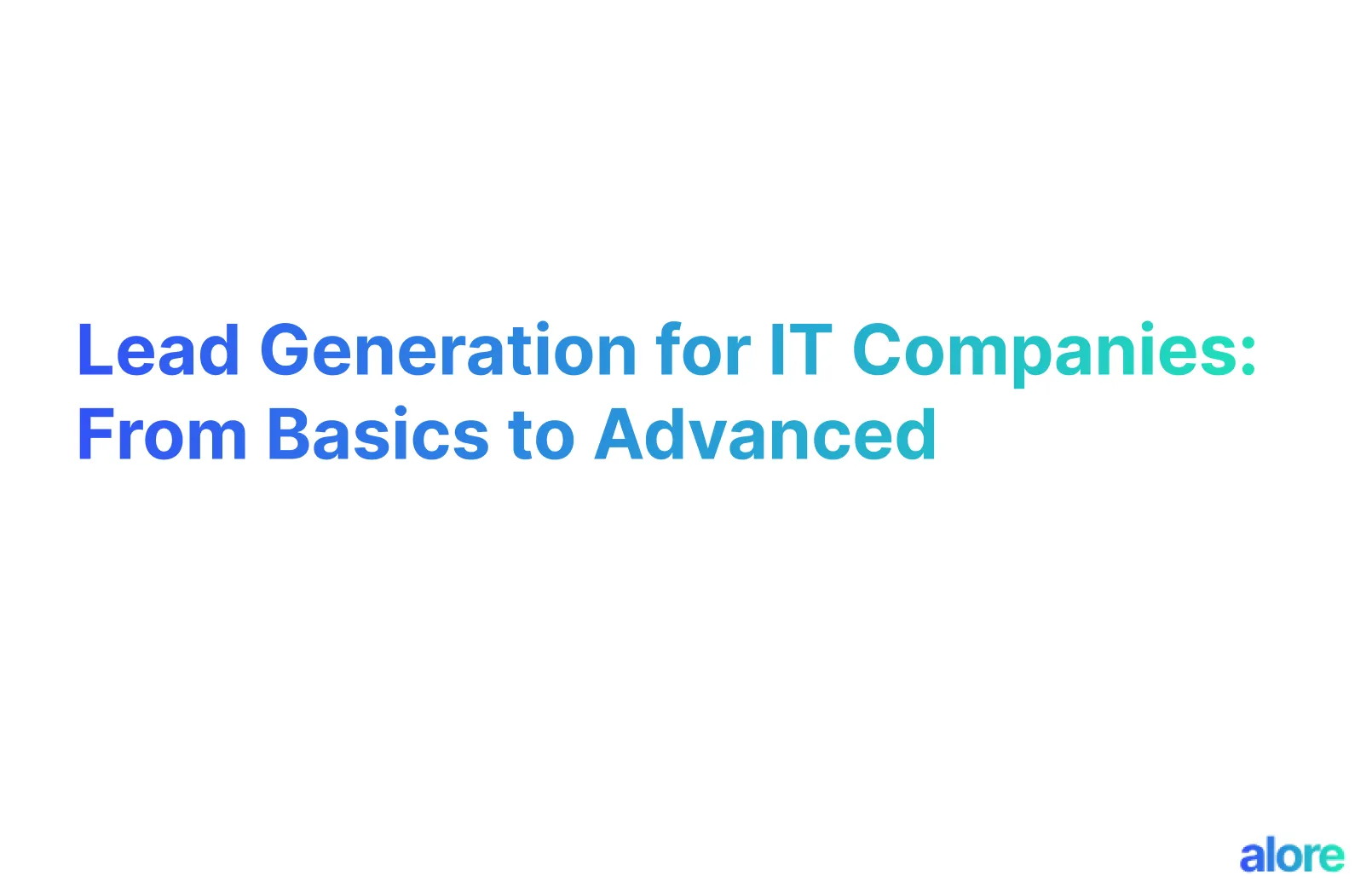Dealing with a long sales cycle can be frustrating. Did you know that businesses with complex and longer sales cycles often see higher costs?
In fact, research shows that longer sales cycles can significantly impact your bottom line by stretching resources and slowing growth. But don’t worry—you can change that.
This blog post provides actionable steps to streamline your sales cycle and improve your sales outcomes. By understanding the key differences between short and long sales cycles, and applying proven strategies, you can streamline your process and start closing more deals faster.
What is a Long Sales Cycle?

A long sales cycle refers to the extended time it takes to close a deal. This type of cycle often spans over several weeks, months or even years, especially in industries with complex products or services, and involves various sales cycle stages.
The process involves multiple steps, including building trust with prospects and addressing the concerns of various decision-makers.
Impact of a Lengthy Sales Cycle on Your Business
1. Increases Costs
- Reduced sales cycle efficiency leads to higher operational costs.
- Businesses need to continue funding marketing efforts, paying sales teams, and maintaining communication with leads over extended periods.
Example: Research shows that companies with extended sales cycles often see a 20% increase in their customer acquisition costs every few months.
2. Reduced Focus on Qualified Leads
- When your sales team is bogged down by lengthy cycles, they may struggle to prioritize high-potential leads.
- Sales cycle optimization can help ensure that your team focuses on the most promising prospects.
- This can result in missed opportunities, as qualified leads might move on to competitors who respond faster.
3. Requires Extensive Research
- In a longer sales cycle, your team needs to invest significant time in sales cycle analysis, researching the prospect’s organization, and understanding their needs.
- For businesses offering consulting services, a long sales cycle can be particularly challenging due to the need for customized solutions.
For instance, gathering data on several factors: the prospect’s buying process, key decision-makers, and specific challenges is crucial but time-consuming.
4. Prolonged Sales Process Delays Revenue
- The longer it takes to close deals, the more delayed your revenue stream becomes, highlighting the need for sales cycle acceleration.
- This can impact cash flow, making it difficult to fund new initiatives or cover operational expenses.
- Monitoring the average sales cycle length can help identify bottlenecks in the process.
Studies indicate that businesses with long sales cycles experience a 15% delay in revenue recognition.
5. Slow Decision-Making
- Longer sales cycles are typically considered more complex due to the number of stakeholders involved and the detailed decision-making process.
- Involving multiple stakeholders can slow down the decision-making process.
- Each person may have different concerns or priorities, which can extend the time it takes to finalize a deal.
A survey revealed that businesses with more than three decision-makers in the process face a 25% increase in the sales cycle length, highlighting the importance of an effective sales cycle strategy.
Key Differences Between Short and Long Sales Cycles

When it comes to sales cycles, understanding the differences in win rate and sales cycle duration between short and long ones is essential.
While short sales cycles are quick and often straightforward, long sales cycles require more time, effort, and patience. Here’s a simple breakdown of the key differences:
1. Time Required
- Short Sales Cycle: Usually completed in a few weeks. The process is fast, and decisions are made quickly.
- Long Sales Cycle: Can stretch over months or even years. It involves multiple steps and requires careful consideration of the sales cycle timeline.
Why this matters: The longer the cycle, the more resources you’ll need to invest, and the longer you’ll have to wait for revenue.
2. Complexity
- Short Sales Cycle: Involves fewer decision-makers. The process is simple, and fewer obstacles stand in the way.
- Long Sales Cycle: Often involves many decision-makers, such as CEOs, managers, and other stakeholders. This adds layers of sales cycle complexity and can lead to delays.
Why this matters: More decision-makers mean more opinions, which can slow down the decision-making process.
3. Customer Engagement
- Short Sales Cycle: Sales cycle engagement is often brief and to the point. The focus is on making the sale quickly, so interactions are more transactional.
- Long Sales Cycle: Requires ongoing customer engagement over time. This involves regular follow-ups, personalized communication, and providing value throughout the process.
Why this matters: In a long sales cycle, sustained engagement is crucial for building rapport, keeping the prospect interested and moving the deal forward. Consistent communication helps maintain momentum and build trust, which is key to closing the deal eventually.
4. Revenue Recognition
- Short Sales Cycle: Sales cycle revenue is recognized quickly. Once the deal is closed, the money flows in, helping the business maintain cash flow.
- Long Sales Cycle: Delayed revenue recognition. Businesses have to wait longer to see the financial benefits of their efforts.
Why this matters: Delayed revenue can affect a company’s ability to reinvest in other opportunities and cover operational costs.
5. Flexibility in Strategy
- Short Sales Cycle: The strategy is often fixed and straightforward. There’s little room for adjustment as the focus is on quickly closing the deal.
- Long Sales Cycle: Requires a flexible approach. As the process is longer, there may be changes in customer needs, market conditions, or competitor actions, requiring adjustments to the sales strategy to ensure sales cycle flexibility.
Why this matters: Flexibility is key in a long sales cycle. Being able to adapt your approach based on new information or shifting priorities can be the difference between closing a deal and losing a prospect.
10 Innovative Ways to Speed Up Your Sales Cycle Length

Discover 10 innovative sales cycle acceleration techniques to speed up your sales cycle. Focusing on maintaining momentum throughout the sales process can result in more closed deals, even in a lengthy sales cycle.
1. Targeted Lead Generation
Targeted lead generation involves sales cycle targeting, focusing on potential customers who are more likely to convert into paying clients. Instead of trying to reach everyone, you aim your efforts at those who fit your ideal customer profile.
Why It’s Important:
By concentrating on qualified leads, you can shorten the sales cycle. This approach saves time and resources, allowing your sales team to work more efficiently.
How to Implement It:
- Identify Your Ideal Customer: Start by defining who your best customers are. Look at factors like industry, company size, and specific needs.
- Use CRM Tools: Leverage customer relationship management (CRM) systems to find leads that match your ideal customer profile.
- Collaborate with Marketing: Work with your marketing team to use data and insights that pinpoint the most promising leads.
Knowing your target customer allows you to focus your efforts where they matter most.
2. Accelerate the Buying Process with Value Propositions
A sales cycle value proposition clearly explains why your product or service is better than the competition. It’s a statement that shows the unique benefits you offer, making it easier for prospects to see why they should choose you.
Why It’s Important:
A strong value proposition can speed up the buying process by helping potential customers quickly understand the benefits of your product.
How to Implement It:
- Highlight Unique Benefits: Identify what sets your product or service apart from others. This could be cost savings, faster results, or superior quality.
- Craft a Clear Message: Make sure your value proposition is easy to understand. Avoid jargon and focus on the specific benefits your product offers.
- Communicate Early and Often: Use your value proposition in all customer interactions, from the first meeting to follow-up emails. Consistent messaging reinforces the value of your product and keeps the sales process moving forward.
3. Leverage Social Proof
Social proof is when you show that others trust and use your product or service, and it plays a crucial role in the sales cycle social proof. This can include customer testimonials, reviews, case studies, or for example, endorsements from well-known brands.
Why It’s Important:
Social proof builds trust quickly. When potential clients and customers see that others like them have benefited from your product, they are more likely to believe in its value.
How to Implement It:
- Gather Testimonials: Ask satisfied customers for short, positive statements about your product. Highlight specific benefits they experienced.
- Showcase Case Studies: Create detailed stories of how your product solved real problems for your customers. Include data and results to make the impact clear.
- Feature Reviews and Endorsements: Display reviews on your website and in your marketing materials. If a well-known company uses your product, mention it.
4. Optimize the Sales Funnel
The sales cycle funnel is the path that potential customers take from their first contact to learning about your product to making a purchase.
Why It’s Important:
A well-optimized sales funnel reduces friction and speeds up the sales process. It ensures that prospects move from one stage to the next without unnecessary delays. Identifying sales opportunities early allows your team to act quickly and effectively.
How to Implement It:
- Analyze Each Stage: Look at each stage of your sales funnel to identify any bottlenecks. Work to remove these obstacles.
- Automate Where Possible: Use automation tools to handle repetitive tasks like follow-up emails or lead nurturing. This keeps prospects engaged without extra effort from your sales team.
- Provide Clear Calls to Action: At each stage of the funnel, make it clear what the next step is. Whether it’s booking a demo or downloading a guide, clear instructions help prospects move forward faster.
5. Use Effective Communication
Effective sales cycle communication means making sure your message is clear and understood. This includes both talking and listening. An unwavering commitment to understanding your prospect’s needs can make a significant difference in closing deals faster, especially in complex sales cycles.
Addressing a prospect's immediate needs early in the sales cycle can help prevent delays and speed up the decision-making process.
Why It’s Important:
Good communication can prevent misunderstandings and delays. When everyone is on the same page, the sales process moves faster.
How to Implement It:
- Ask Questions: Start by asking your potential customer what they need. This helps you understand their problems and offer the right solution.
- Listen Actively: Pay attention to what they say, and repeat it back to make sure you understand. This builds trust and shows that you care.
- Follow Up: Keep in touch regularly. Send updates, answer questions, and make sure they know you’re there to help.
Addressing potential obstacles early in a long cycle can help maintain momentum and prevent delays in closing deals.
6. Involve Multiple Stakeholders Early in the Cycle
Stakeholders are people or companies who have a say in the buying decision. Involving sales cycle stakeholders early means getting everyone who needs to approve the purchase on board from the start.
Why It’s Important:
When multiple stakeholders are involved early, it can prevent delays later on. If you wait until the end to bring them in, they might raise concerns that slow down the next stage of the process. Involving them early ensures that everyone’s questions and concerns are addressed upfront.
How to Implement It:
- Identify Key Stakeholders: Find out who needs to approve the purchase. This might include managers, department heads, or even the CEO.
- Schedule Meetings Early: Set up meetings with all stakeholders early in the sales process. Make sure they understand the benefits of your product or service.
- Address Concerns Right Away: If anyone has concerns, address them immediately. This prevents issues from piling up and causing delays later.
7. Nurture Leads with Automated Email Campaigns
Automated email campaigns are pre-scheduled emails sent to your leads over time. They are designed for sales cycle nurturing to build relationships, keep your prospects engaged and guide them through the sales process.
Why It’s Important:
Nurturing leads through automated emails saves time and keeps the sales process moving. It ensures that your leads stay connected to your brand, even if they aren’t ready to buy your service immediately.
How to Implement It:
- Segment Your Leads: Group your leads based on their interests or stage in the sales cycle. This way, you can send them personalized content.
- Create a Sequence: Develop a series of emails that provide value, answer common questions, and highlight your product’s benefits.
- Track Performance: Use analytics to see which emails are working best. Adjust your campaigns based on what’s getting the most engagement.
8. Build Strong Relationships to Secure Repeat Business
Building strong sales cycle relationships means creating trust and loyalty with your customers. It’s not just about making one sale; it’s about turning customers into repeat buyers.
Why It’s Important:
Repeat business is crucial for long-term success. It’s easier and cheaper to sell to an existing customer than to find a new one. Strong relationships also lead to referrals, further speeding up your sales cycle.
How to Implement It:
- Stay in Touch: Regularly check in with your customers. Send them updates, helpful resources, or even just a thank-you note.
- Provide Excellent Support: Be there for your customers when they need help. Quick and effective support builds trust and keeps them coming back.
- Offer Loyalty Programs: Reward your repeat customers with discounts, special offers, or exclusive access to new products.
9. Tailor Your Sales Process to Your Target Audience
Tailoring your sales process means engaging in sales cycle customization to match the needs of your target audience. Instead of using a one-size-fits-all approach, you focus on what works best for the people you are trying to reach.
Why It’s Important:
When you tailor your sales process, you connect better with your potential clients and customers. They feel understood, which makes them more likely to trust you and move forward with the sale. This can significantly shorten a long sales cycle.
How to Implement It:
- Know Your Audience: Start by researching your target audience. Understand their needs, preferences, and pain points.
- Customize Your Approach: Use this information to adjust your messaging, presentation, and offers to fit what your audience values most.
- Be Flexible: Be ready to adjust your approach if you see that something isn’t working. Flexibility helps you stay aligned with your customers’ needs.
10. Enhance Close Rates with Consultative Selling
Consultative selling, often enhanced through sales cycle consulting, is a sales approach where you act as an advisor rather than just a salesperson. Instead of pushing a product, you focus on understanding your customer’s problems and offering solutions that meet their needs.
Why It’s Important:
Consultative selling builds trust and helps you close deals faster. When customers see you as a helpful expert rather than someone just trying to make a sale, they are more likely to buy from you. This approach is especially effective in a long sales cycle, where building trust and relationships is key.
How to Implement It:
- Ask Questions: Start by asking your customers about their challenges and goals. This helps you understand how your product can help them.
- Listen and Advise: Listen carefully to their responses and offer advice that shows you understand their situation.
- Focus on Solutions: Instead of just talking about your product’s features, explain how it can solve your customer’s specific problems.
Conclusion
A long sales cycle can be challenging, but with the right strategies for sales cycle improvement, you can speed it up. Achieving shorter sales cycles can significantly improve your company’s profitability.
Remember, every step you take to streamline your sales process will pay off in the long run with success. Stay patient, stay focused, and success will follow.








